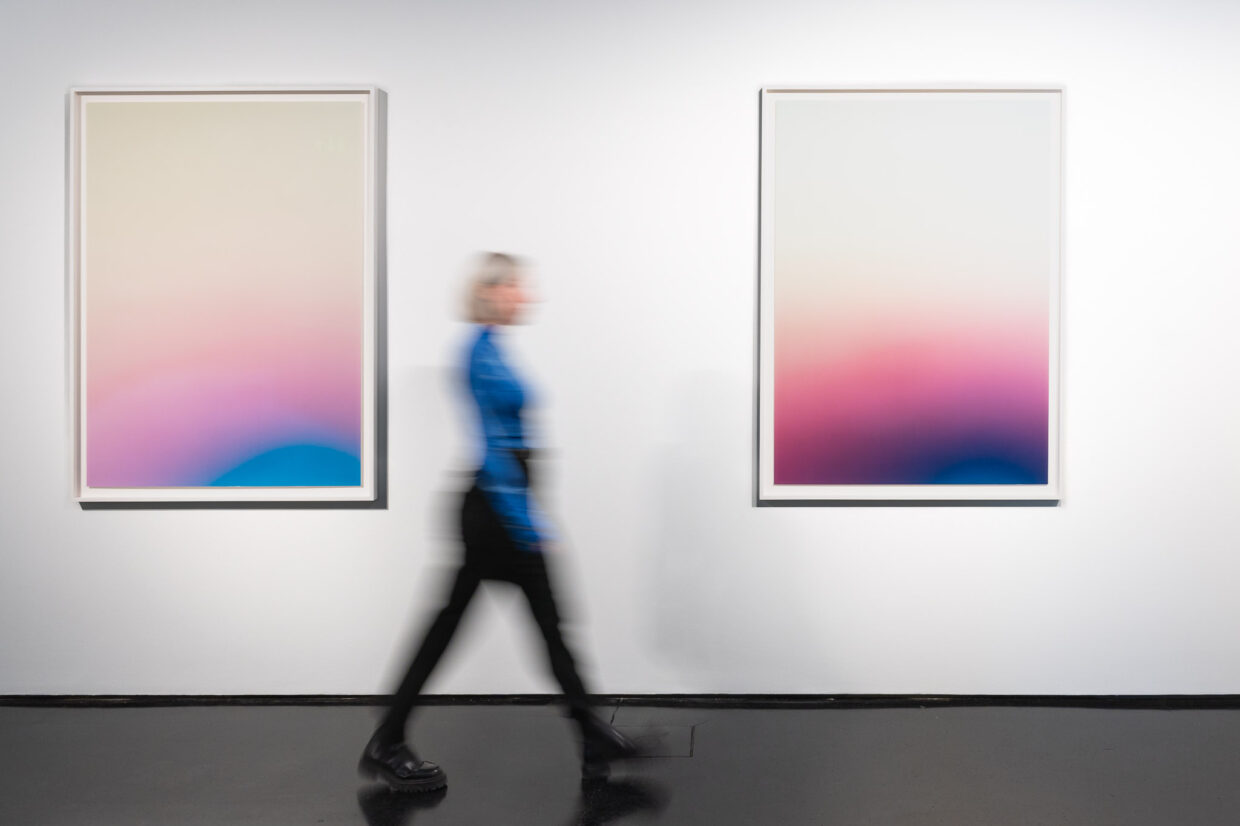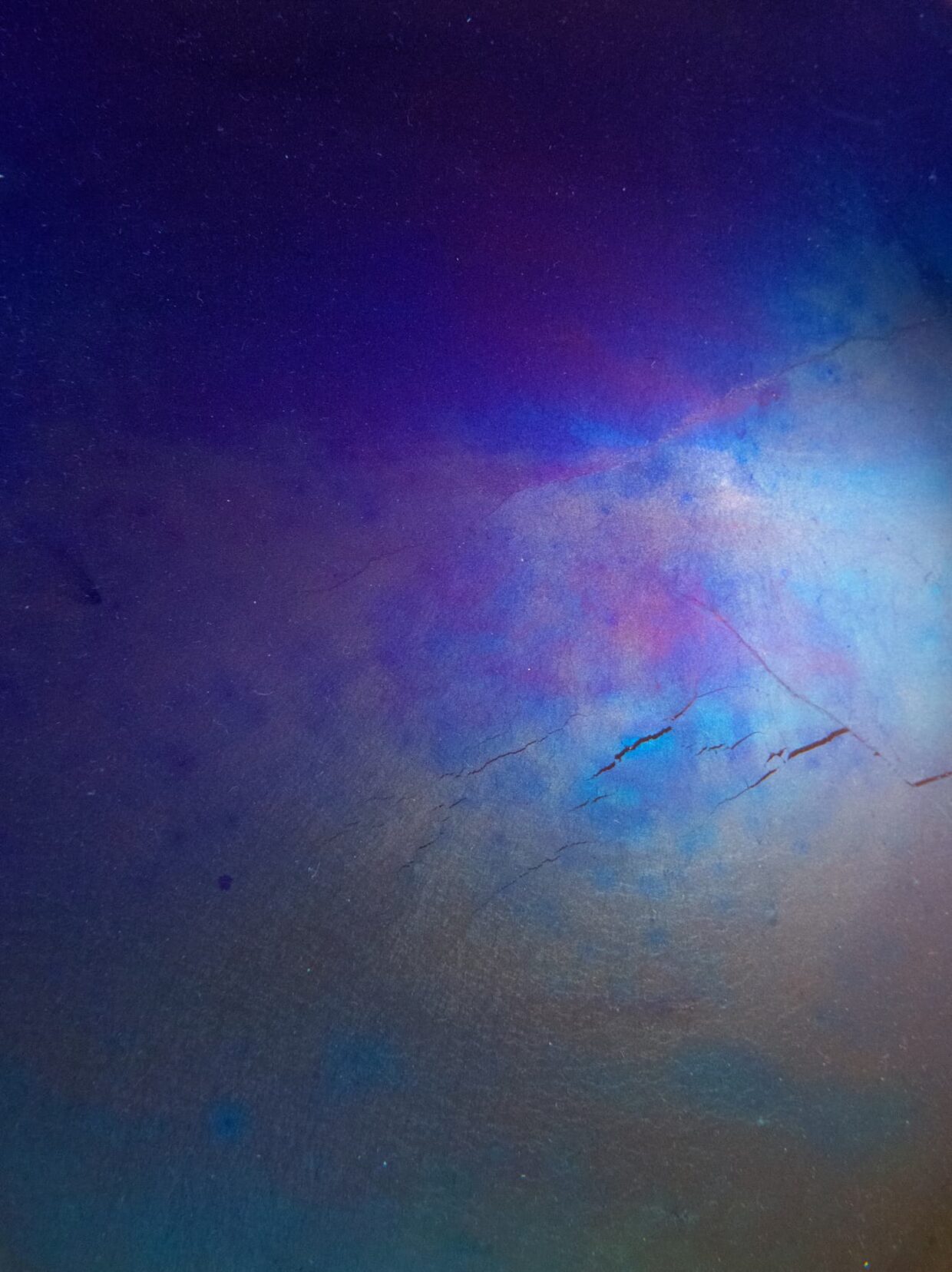2024
Laure Winants
- Visual arts
Seascapes

Laure Winants is an artist-researcher living in Paris and Brussels. Laure collaborates with transdisciplinary research groups, in particular with CNRS/CNES on atmospheric pollution in the Pyrenees via the Albedo 2021 project, the volcanology laboratory in Iceland on the monitoring of natural and anthropogenic phenomena such as volcanic activities with Phenomena 2022, or the Polar Institute with the Time Capsule 2023-2024 project. Her research highlights the great interdependence of living organisms with each other and with their environment, and the importance of giving voice to non-human entities. She works on sensitive materials and creates active works that react to their environment; light, time, temperature, humidity. During polar missions, Laure works directly in the elements and joins the scientific expedition. There are numerous experiments: capturing the composition of light, capturing the acoustic inflections of icebergs, printing the chemical composition of water. Laure has exhibited her work internationally in Berlin, Reykjavik, Brussels, Paris and soon in Stockholm, Luxembourg and Osaka. Her work has entered the collection of several foundations such as the Fondation des Arts du Luxembourg and the Palais de Liège.
Laure Winants
Project
Measuring, mapping, taking samples along the coasts, revealing invisible elements on the photographic film or under the microscope lens, so many processes that allow to translate a silent reality of which humans are at the origin. The scientist dives into the infinitesimal world of particles and life, studies marine pollution, and shares the artist’s obsession in a disturbing way.
To reveal the invisible, my project is to capture the impact of pollutants on the coastline using the light of the microscope and an experimental and interactive photographic technique: photograms/chemigrams. The chemigram is an experimental device that makes it possible to visually perceive acidification and the interaction of polluting elements, pesticides, antibiotics, hormones or even temperature, salinity and oxygen levels with ecosystems. It is the result of a capture linked jointly to light, environmental conditions and the artist’s intervention, according to a protocol where chance and mastery of gesture are combined. This technique, which combines the physics of painting and the chemistry of photography, was invented in 1956 by Pierre Cordier.
The chemical properties of the photosensitive paper in contact with light will be altered by the chemical composition of the samples taken at sea. The idea would be to have a large format print (70×120) for each sample and therefore for each passage over a
part of the coastline, thus creating a sensitive map of our impact on coastal ecosystems. Working on large formats will allow us to see what is happening under the microscope light on a human scale. An interesting difference in scale to give microorganisms their rightful place.
All of the pieces will be part of an immersive installation where the photo scenic pieces will interact with a soundscape. To refer to Vinciane Despret “living like a bird” — the voice will be given to the elements and other forms of life allowing a sensitive immersion of the spectator, traversing a space inhabited by unusual images, sometimes close to the imagination and fiction. Crossed by marine sounds, the viewer will plunge into this unsuspected domain of the ocean, discovering through a plastic work the stakes of marine pollution, the richness of ocean environments and our daily actions that upset their balance. Time does not fade, the Ocean continually imprints what we do there.
Meet Laure Winants
Discover some of her work inspired by life aboard Tara:
à venir
Her works


